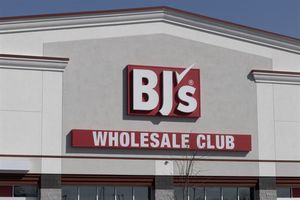Gen-Z is Guiding the Retail Revolution. Here's What to Know
By:
StatePoint Media
January 21, 2025 at 01:00 AM EST
SPONSORED CONTENT -- (StatePoint) Customer expectations continue to evolve at breakneck speed, and 2025 is likely to usher in further changes to brick-and-mortar stores as retailers compete for shoppers’ attention. With Gen-Z’s spending power projected to reach $12 trillion by 2030—according to Nielsen IQ—industry experts say that they’re leading the retail revolution. “Gen-Z are digital natives, fiercely value-driven, and accustomed to on-demand, personalized experiences. As such, shoppers can expect retailers to dive into new technologies as they strive to deliver innovative experiences that are as seamless and personalized as they are meaningful in the new year,” says Christa Anz, global marketing director at Sensormatic Solutions, a leading global retail solutions provider. According to Sensormatic Solutions data, experience and convenience remain top factors in consumer purchasing decisions among all generations, with crowds and lines (53%), out-of-stocks (46%) and long waits for pickups (29%) cited as shoppers’ top pain points. Fortunately, the foundation for improvements has been laid. Retailers are employing emerging technology to meet these desires, and consumers will soon start to see the benefits. For example, solutions that draw on organizational data to provide predictive analytic insights can help retailers get ahead of disruptions to ensure customer service issues are addressed proactively and resolved quickly. Meanwhile, the same types of data can be used to enhance personalization and gamification in retail apps, websites and loyalty programs, making them simpler and more satisfying for shoppers to use. Technology and personalization efforts will also help ensure customers get the products they want, right when they want them. RFID-enhanced inventory tracking will improve in-store pickup, and end-to-end supply chain digitalization efforts will help retailers and manufacturers address material shortages, severe weather and other challenges expected in 2025. Additionally, shoppers can expect to be connected with products they need—and those they don’t yet know they need— thanks to the ubiquity of data retailers now have access to and refinements in the way businesses use that information to personalize offers. According to “Frontiers in Psychology,” personalization efforts boost loyalty in 68% of customers, making the implementation of this technology a win-win. Another rising trend is retail media. P2PI predicts that in 2025, retail media advertising spend will surpass linear TV spend. Despite their popularity, most consumers are unaware of how retail media networks impact their shopping experiences and improve their interactions with brands. Using in-store and online data to create omnichannel customer and demographic profiles, retail media networks help stores adjust inventory tactics, promotions, displays and more to reflect the preferences of their customers. On the security side of the equation, Sensormatic Solutions notes that the impact that loss prevention and safety measures will have on customers will likely wane this year. This shift comes as more retailers adopt a smart hybrid approach, with a focus on balancing safety and satisfaction. The combination of physical deterrents and item- or category-level inventory data allows retailers to protect the most at-risk parts of the store (and the people in them) without adding unnecessary friction elsewhere. Finally, market pressures will continue to guide retailers. As 2025 unfolds, private-label products are expected to gain popularity, appealing to shoppers looking to save and retailers looking to boost revenue. For more insights into the 2025 shopping landscape, visit sensormatic.com. “The preferences of Gen Z are a reflection of where the industry is at this moment; listening to Gen Z’s needs will help retailers improve both their own operations and the ways they interact with shoppers,” says Anz. Photo Credit: (c) pressmaster - stock.adobe.com More NewsView More

BJ’s Wholesale Club and the Case for a Bullish Market Reversal ↗
Today 11:45 EST
Via MarketBeat
Tickers
BJ

Why Costco Stock May Struggle Even as Its Business Thrives ↗
Today 10:31 EST


3 High Growth Revenue Stocks That Wall Street Loves ↗
Today 8:21 EST
Via MarketBeat
Recent QuotesView More
Stock Quote API & Stock News API supplied by www.cloudquote.io
Quotes delayed at least 20 minutes. By accessing this page, you agree to the Privacy Policy and Terms Of Service.
© 2025 FinancialContent. All rights reserved.
|
